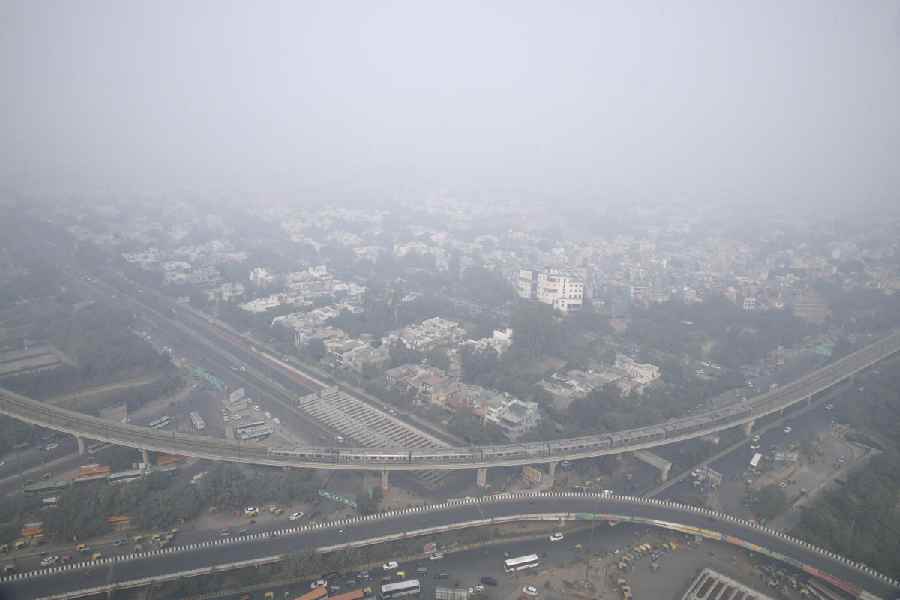Italy's Lake Garda has a new tourist attraction — visitors can now walk to Rabbit Island (Isola dei Conigli), a tiny outcrop in the middle of the lake, instead of having to take a boat.
The lake's devastatingly low water level has exposed sandbanks and stones that form a path from the shore to the outcrop, which is also known as San Biagio Island.
But the tourist novelty underlines a disastrous ecological situation in northern Italy. The region has become so dry that the water level of Lake Garda, Italy's largest lake, is only half of what it normally is at this time of year.
'Below-average rainfall, very little snow'
"Northern Italy is currently experiencing a dry period that has already lasted two years," said Mattia Gussoni, a meteorologist with the weather forecasting service Il Meteo. This winter, he said, has seen unusually high temperatures and low precipitation.
"Even in the Alps, there has been below-average rainfall and very little snow," he said, adding that the previous winter saw a similar situation. This has led to a water scarcity in the region that is also affecting the Po, Italy's longest river and a vital source of water for agriculture.
The tourist board responsible for Lake Garda is trying to avoid making the situation appear overly dramatic.
"Fluctuations in the level of Lake Garda are normal," said Natasha Bontadi, the lake's public relations officer. The lake, which has an average depth of 133 meters (436 feet), is the country's most important drinking water reservoir and is therefore constantly monitored. Currently, all water sports are allowed, and ferries are running on schedule.
Last summer, communities around Lake Garda put water saving measures in place such as a ban on the filling of private pools. Water restrictions are likely to go into effect again this year, Bontadi said, adding that a campaign is currently being prepared to raise tourists' awareness of the issue.
River cruise by bus
North of the Alps in Switzerland and Germany, tourism operators are also planning ahead for low water levels during the European summer.
"The Rhine River will probably have low water for the most part," said Daniel Thiriet, vice president of IG RiverCruise, a European interest group for river cruise companies.
Similar to last year, he said, it will probably be necessary to transport passengers by bus at some critical points along the Rhine where the water is too low for boats to pass. "We are used to planning something like this," he said. "So the low water levels won't take us by surprise."
Too little precipitation this winter has also had an impact on Europe's ski resorts, particularly those at lower altitudes. Just over half of Switzerland's ski slopes now rely on artificial snow, according to the Swiss cable car association. And in France's Jura region in the country's east, where the mountains are well below 2,000 meters (6,560 feet) in height and home to numerous ski resorts, the number of tourists in February was 69% below the average of the past five years.
The Spanish region of Catalonia is also suffering a prolonged dry spell. "The situation in Barcelona is dramatic," said Alfons Puertas, a meteorologist at the Observatorio Fabra weather station located in the mountains above the city. The past two years have been the driest since records began in 1914, he said. In 2022, the average rainfall wasn't even half of the typical rainfall per year of 621 millimeters (24 inches).
Numerous reservoirs, which supply drinking water to places like Barcelona, have reached historic lows.
Where is the water?
Catalan authorities put the first water-saving measures in place a few months ago. These included a cancellation of the Font Magica fountain spectacle in Barcelona that typically includes a music and light show and draws crowds on summer evenings. The fountain will stay dry until further notice.
Meanwhile, the situation has eased somewhat on the popular Spanish vacation island of Mallorca. Large parts of the island were affected by drought in recent years, and there were fears the upcoming tourist season could completely exhaust the already scarce water resources.
At the end of February, however, Storm Juliette moved across the island bringing with it abundant rain and even snow. Some weather stations recorded five times the average rainfall. After months of falling water levels, Mallorca's reservoirs are now at 90% capacity.
But back in northern Italy, meteorologist Mattia Gussoni doesn't expect the drought to break. The upcoming summer threatens to be "very difficult," he said, especially considering that it would have to rain for more than a few days to make up the water deficit.
"It would have to rain through the entire spring for that to happen," he said. "We're dealing with the most dramatic effect of climate change here."











